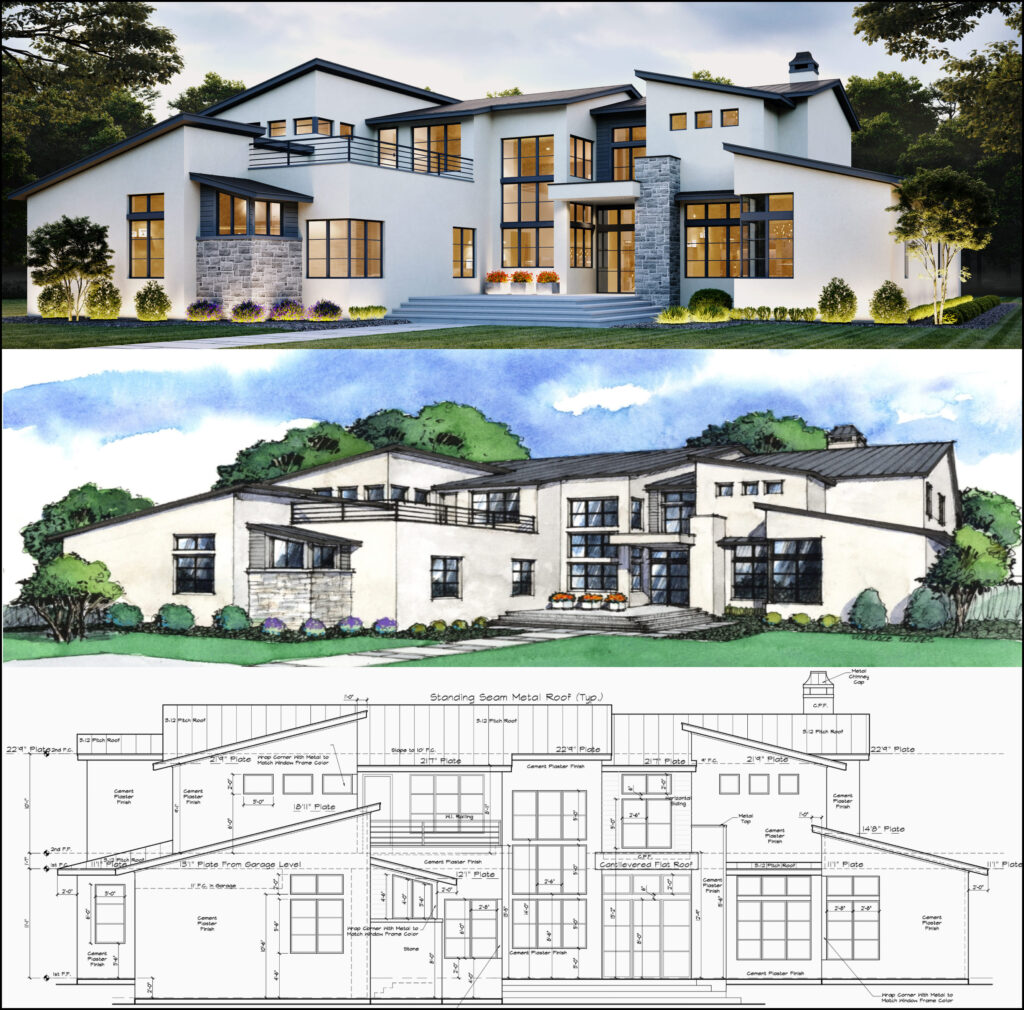Understanding the Collaborative Process Between Engineers and Designers in Modern Building And Construction Projects
The collaborative process in between architects and designers is vital in modern-day building and construction projects, as it harmonizes style intent with design expediency. Exploring these characteristics discloses insights that could substantially influence job end results and general industry requirements.
The Significance of Partnership
The joint synergy between designers and designers is essential for the successful awareness of any type of building task. This collaboration combines distinct expertise and perspectives, enabling the integration of ingenious style with functional design solutions. By collaborating, architects and designers can ensure that a task not just fulfills visual and useful demands yet likewise complies with security, sustainability, and monetary restrictions.
Partnership fosters a shared vision, facilitating the placement of objectives and assumptions from the start. This positioning is vital in attending to prospective difficulties and mitigating risks that can emerge throughout the job lifecycle. Additionally, a collective method allows for the reliable allowance of resources, optimizing both time and price.
The significance of collaboration encompasses the iterative procedure of style and construction, where responses from engineers can inform building decisions, leading to even more possible and lasting designs. Alternatively, designers can motivate designers to think artistically about exactly how to achieve structural honesty without compromising imaginative intent. Ultimately, the collective partnership between engineers and engineers is not simply advantageous; it is essential to the production of premium, useful, and innovative developed settings that fulfill the requirements of culture.
Interaction Techniques and Tools
Efficient interaction techniques and tools are important for promoting cooperation between engineers and designers throughout the project lifecycle. Establishing clear channels of communication is necessary to ensure that all staff member are lined up with job purposes, timelines, and duties. Routine conferences, both in-person and digital, give opportunities for stakeholders to discuss progress, address issues, and make notified choices.

Additionally, embracing collaborative interaction tools, such as Slack or Microsoft Teams, permits immediate messaging, data sharing, and continuous discussions, advertising a more dexterous response to arising issues. Paper administration systems additionally play an essential duty in arranging job documentation, guaranteeing that all staff member have access to the latest details.
Shared Goals and Project Vision
A merged job vision functions as the structure for successful cooperation between designers and engineers (cda architects). This common vision not just aligns the efforts of both parties yet also establishes a typical framework for decision-making throughout the task's lifecycle. By verbalizing clear objectives, stakeholders can efficiently navigate the complexities of modern-day building and construction projects, guaranteeing that both aesthetic and practical demands are fulfilled
Developing common objectives involves open dialogue and a thorough understanding of find this each discipline's contributions. Architects generally concentrate on design intent, spatial connections, and user experience, while engineers emphasize structural integrity, systems functionality, and compliance with regulations. When these perspectives are straightened, the outcome is here a natural job that sticks to both creative aspirations and technological usefulness.
In addition, a distinct job vision fosters accountability amongst employee, encouraging each individual to take ownership of their role in attaining the wanted result. Routine check-ins and collaborative workshops can better enhance this commitment, allowing for changes to be made as the job develops. Ultimately, a shared vision not just improves teamwork yet also boosts the high quality of the last deliverable, causing successful task completion.
The Duty of Technology
Leveraging technology has actually come to be essential in improving partnership in between engineers and designers. Structure Details Modeling (BIM) stands out as a pivotal technology, enabling both engineers and designers to develop detailed 3D models that encapsulate design intent and structural integrity.
Furthermore, cloud-based platforms enable smooth partnership, enabling project stakeholders to access and upgrade job data from anywhere. This cultivates a society of transparency and liability, as modifications can be tracked and evaluated in real-time. Additionally, mobile applications more improve interaction, offering on-site groups with instant access to task specifications and updates.
Arising innovations such as synthetic knowledge and device learning are additionally beginning to play a role in predictive analysis, helping groups identify potential concerns before they develop. Inevitably, the duty of modern technology in architecture-engineering cooperation not just improves workflow effectiveness yet also improves advancement, leading to more effective task end results. By welcoming these technical improvements, architects and designers can guarantee a much more natural and productive collaborative procedure throughout the construction lifecycle.
Study in Successful Collaborations
Numerous study show the profound effect of effective partnerships between architects and engineers on task outcomes. One notable example is the partnership on the High Line in New York City City, where landscape architects, engineers, and city coordinators interacted to change a deserted rail line right into a dynamic public park. This multidisciplinary approach not only boosted the visual high quality but also ensured architectural safety and ecological sustainability.

The Burj Khalifa in Dubai further demonstrates the significance of collaborative initiatives - cda architects. The combination of design and design experience made it possible for the task team to attain unmatched heights while adhering to security guidelines and aesthetic vision
These instances emphasize the relevance of interaction, trust, and shared objectives. In today's complicated building setting, such partnerships are vital to browsing challenges and providing jobs that fulfill both useful and visionary goals.
Conclusion
In final thought, the partnership in between engineers and designers is essential for the success of modern construction projects. Effective communication methods, a shared job vision, and the assimilation of innovative modern technologies are critical components that promote this collaboration. By cultivating a society of responsibility and leveraging devices such as Building Information Modeling (BIM), teams can navigate task intricacies, making certain that visual, practical, and sustainability goals are achieved. Ultimately, this harmony brings about cutting-edge and successful project outcomes.